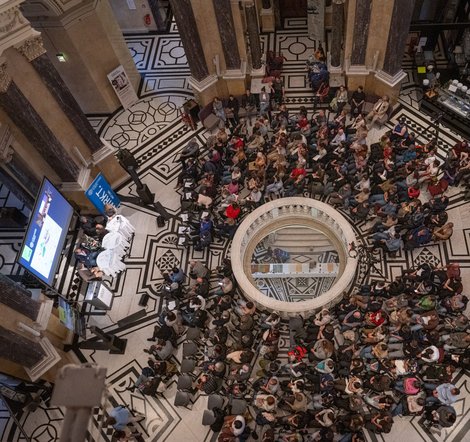13th Environmental Dialogue – Pollutants in food: Small doses, what effect do they have?
May 6th, 2025, 6pm - 8pm
Natural History Museum Vienna
Food: More than just nourishment
Food is much more than just nourishment—it shapes our lives and our bodies, influences our culture, and touches our emotions. Despite the high level of food safety in Austria, there is still concern that environmental toxins are entering our bodies through food. This concern is understandable, as food is produced in a technologized world where pollutants are omnipresent.
A look back at history also shows that the issue of contaminants in food is not new and that our understanding of “toxins” has changed steadily over time.
Questions about food safety
Are the concentrations of contaminants measured today harmless? Are the current methods for assessing the risks of contaminants in food adequate? And how do our perceptions and understanding of “toxins” influence the discussion about health risks?
Challenges in assessing contaminants
These questions are particularly relevant because it is impossible to comprehensively test every single substance. In plastics alone, which are also used for food packaging, more than 16,000 chemicals are known, a quarter of which are considered potentially harmful. Studies show that chemicals from packaging can migrate into food. A current example is PFAS, the so-called forever chemicals, which enter food via drinking water, pesticides, or packaging. While most PFAS, a group of over 10,000 ubiquitous chemicals, have long been considered safe, recent studies show that many of these compounds are highly problematic. In Western Europe, up to a quarter of young people exceed the guideline values for PFAS recommended by the European Food Safety Authority.
Measures to protect our health
In a world where new substances are constantly being developed and banned chemicals are often replaced by other, no less problematic substances, the question arises: What measures are necessary to better protect our food and health? Can current assessment procedures keep pace with the multitude of known and unknown substances, especially with regard to chronic exposure to trace concentrations of pollutants? What innovative approaches and scientific methods exist to improve protection against pollutants and increase food safety? And how do our history and socio-cultural background influence the perception and assessment of risks and hazards?
Key information
When: May 6, 2025, doors open at 5:30 p.m., start: 6:00 p.m.
Where: Upper Dome Hall, Natural History Museum Vienna, main entrance – Maria-Theresien-Platz, 1010 Vienna
Event language: German
Program
Welcome
- Katrin Vohland – Director General of the Natural History Museum Vienna
- Manuela Baccarini – Vice Rector for Research and International Affairs at the University of Vienna
Keynote speech
- Thilo Hofmann – Professor of Environmental Geosciences and Head of the Environment and Climate Research Hub at the University of Vienna
Panel discussion with audience participation
- Giorgia Del Favero – Toxicologist at the University of Vienna
- Monika Pietrzak-Franger – Cultural and literary scholar at the University of Vienna
- Johann Steinwider – Head of the Department for Risk Assessment of Food at AGES
- Helmut Burtscher-Schaden – Environmental chemist at Global 2000
- Moderator: Marlene Nowotny, science editor at Ö1

